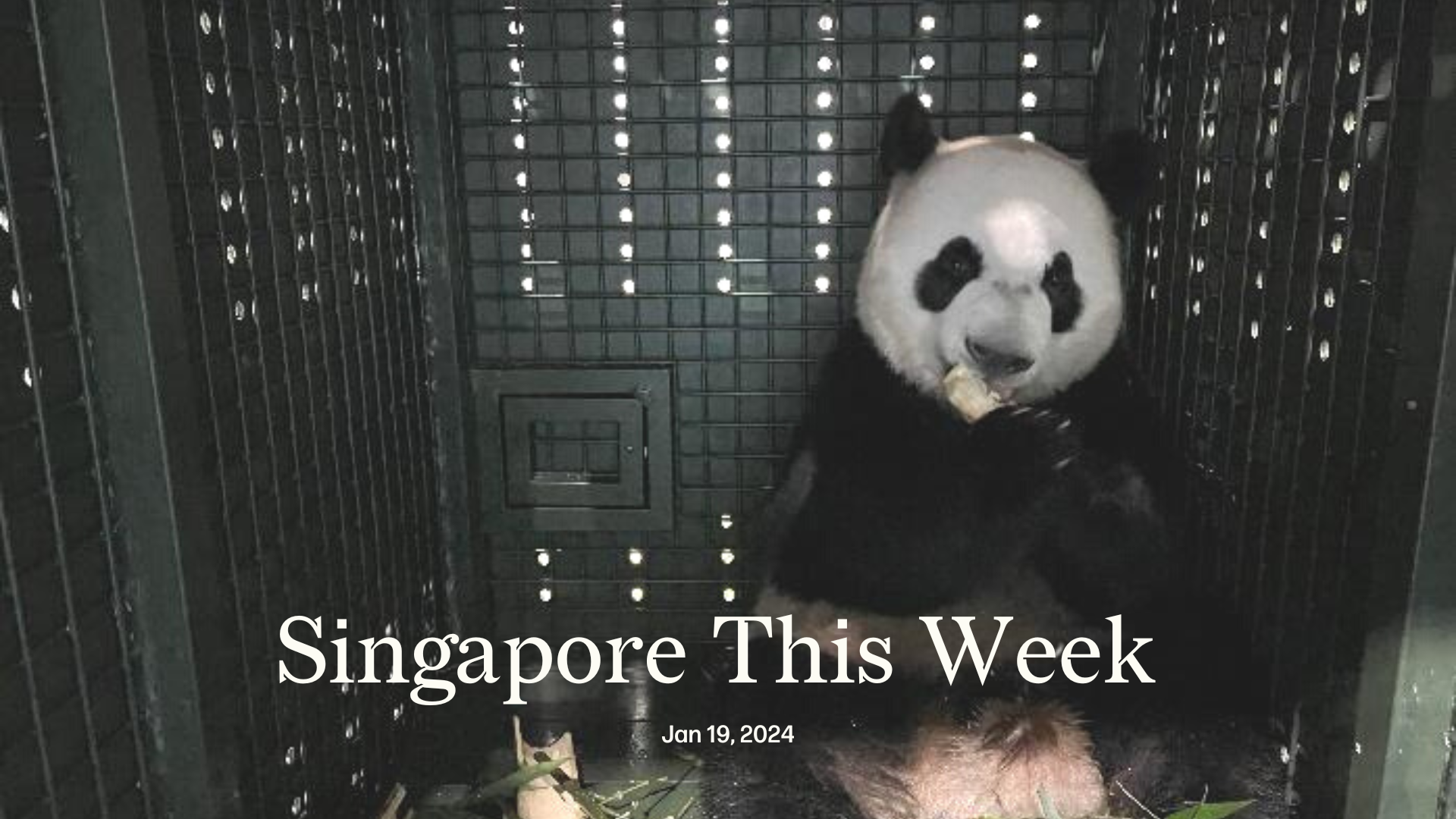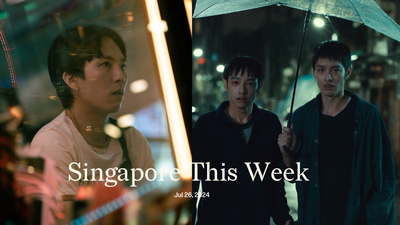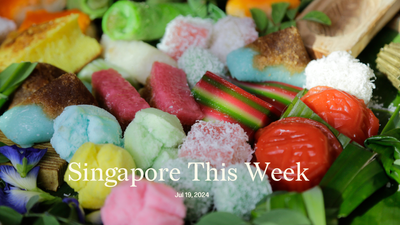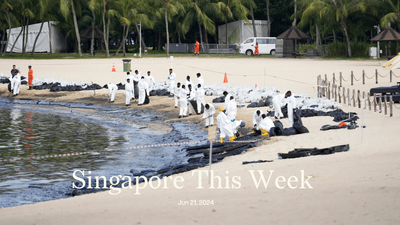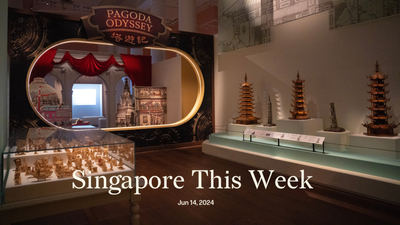Politics: Will the man who ‘put Singapore on the global map’ now embarrass the PAP?
Last March, S Iswaran, then transport minister with the ruling People’s Action Party (PAP), appeared on The Daily Ketchup podcast. The hosts asked about the most memorable moments in his decades-long political career. Bringing the Formula 1 (F1) race to Singapore, Iswaran began, highlighting the doubts and challenges he faced in 2006 about an event that he believes ultimately “...put Singapore on the global map.” Memorable, perhaps, but now for different reasons. Yesterday, after a months-long investigation by the Corrupt Practices Investigation Bureau (CPIB) into Iswaran and Singapore’s corporate lead on the F1 enterprise, tycoon Ong Beng Seng, the former appeared in court to face 27 criminal charges—24 for obtaining valuable items as a public servant; two for corruption; and one for obstructing justice. The over S$380,000 in gifts that Ong allegedly showered on Iswaran offer a delicious insight into the cultural life of one PAP minister, including tickets to numerous elite British football matches, and theatrical shows in London like “Harry Potter And The Cursed Child”, “Kinky Boots”, “Betrayal” and “The Play That Goes Wrong”. These juicy details, particularly the show’s titles, have overnight spawned hilarious memes and threads across Singapore’s internet, including “Iswaran’s jams”, a West-End-show Spotify playlist that depicts “A Tale of Individual Fallibility, Greed, Corruption and Disgrace”. Few in the PAP will be laughing, however, because Iswaran has strayed from the script. Instead of pleading guilty, as an obedient cadre might have, he’s rejected all the charges and is fighting them. (Iswaran was put on leave when the investigation began last July; yesterday he resigned.) Worse for the party, Iswaran is represented by Davinder Singh, a former PAP member of Parliament who’s not only one of Singapore’s sharpest and most feared litigators, but is best known for representing Lee Kuan Yew and Lee Hsien Loong, prime minister, in their civil lawsuits. This apparent role switch will be one of the most keenly anticipated aspects of the upcoming courtroom drama, as will details about any quid pro quo around Ong’s gifts to Iswaran. Analysts hitherto believed that the main impact of this investigation on the party would be the loss of a key minister to the PAP’s West Coast team—mitigated by the PAP’s ability to reshape the narrative about his ejection around its much-vaunted “zero tolerance for corruption”. Now, all bets are off. The last time a PAP minister was investigated for corruption, in 1986, it ended tragically. Teh Cheang Wan, then minister for national development under the senior Lee, took his own life before he could be charged. “As an honourable oriental gentleman, I feel it is only right that I should pay the highest penalty for my mistake,” he wrote in his suicide note. Nobody in the party would have expected Iswaran to respond in such a horrific way. But they probably didn’t expect such a fight. Once again, Iswaran has put Singapore on the global map.
International: The Houthis part the Red Sea
“So we in Malaya as part of Britain’s empire must cut our oil consumption…But more serious economic consequences are to follow. The increase in freight charges because of the long Cape route will no doubt make goods from Europe more expensive,” said Lee Kuan Yew, then parliamentarian with the PAP, in his New Year’s message in 1957, months after the first Suez Crisis emerged. More recently, in 2021, when the 400m-long Ever Given tanker somehow got lodged diagonally across the Suez Canal—like some nautical Tetris game gone wrong—Singapore’s government and firms were once again put on high alert. Today some 12 percent of global trade, including as much as 30 percent of container traffic, passes through the Red Sea. So perhaps it’s unsurprising that Singapore, one of the world’s most trade-dependent countries, has been caught up in what The Economist calls a “new Suez Crisis”. There’s an important geographical difference (see below): while Egypt’s Suez Canal is on the northern end of the Red Sea, today’s troubles are on its southern end, in that narrow Bab al-Mandab Strait separating Eritrea and Djibouti from Yemen. In late November, the Houthis, who’ve controlled a large Western chunk of Yemen since a civil war ceasefire in 2022, began their attacks on commercial ships traversing that route, including one bearing a Singapore flag. The Iranian-backed Houthis, who’ve pledged to “join the Palestinian people and confront the enemy”, have said that all vessels they believe are linked to Israel or its allies are legitimate targets. Numerous container-shipping firms have opted to take the lengthier and costlier route that once worried Lee. Traffic through the Red Sea has fallen by about a third. Logistics indicators in Singapore declined in December. To counter this threat to global trade, on December 18th, the US formed a Red Sea coalition called “Operation Prosperity Guardian”, which Singapore joined. In response to queries this week, the Ministry of Defence “...clarified that Singapore did not participate in the military strikes against the Houthis in Yemen.” From the start of this Israel-Hamas war, Singapore has been eager to be seen as pro-peace rather than supportive of its old friend Israel. (It supported the December call in the UN for an immediate ceasefire in Gaza.) There are many risks ahead, including the chance that Yemen’s tenuous civil war ceasefire may not hold, as the Israel-Hamas war spreads across the region; and the impact that prolonged Red Sea tensions might have on global trade (and the cost of imported goods). It seems grotesque for consumers far away to worry about our next shipment of cars when thousands of Palestinians don’t have food. “If we only think of the stupidity of humans in organising human beings in society, we can get quite angry,” Lee said in that same message, in reference to nationalist Malayan policies. Arguably his most astute comment ever.
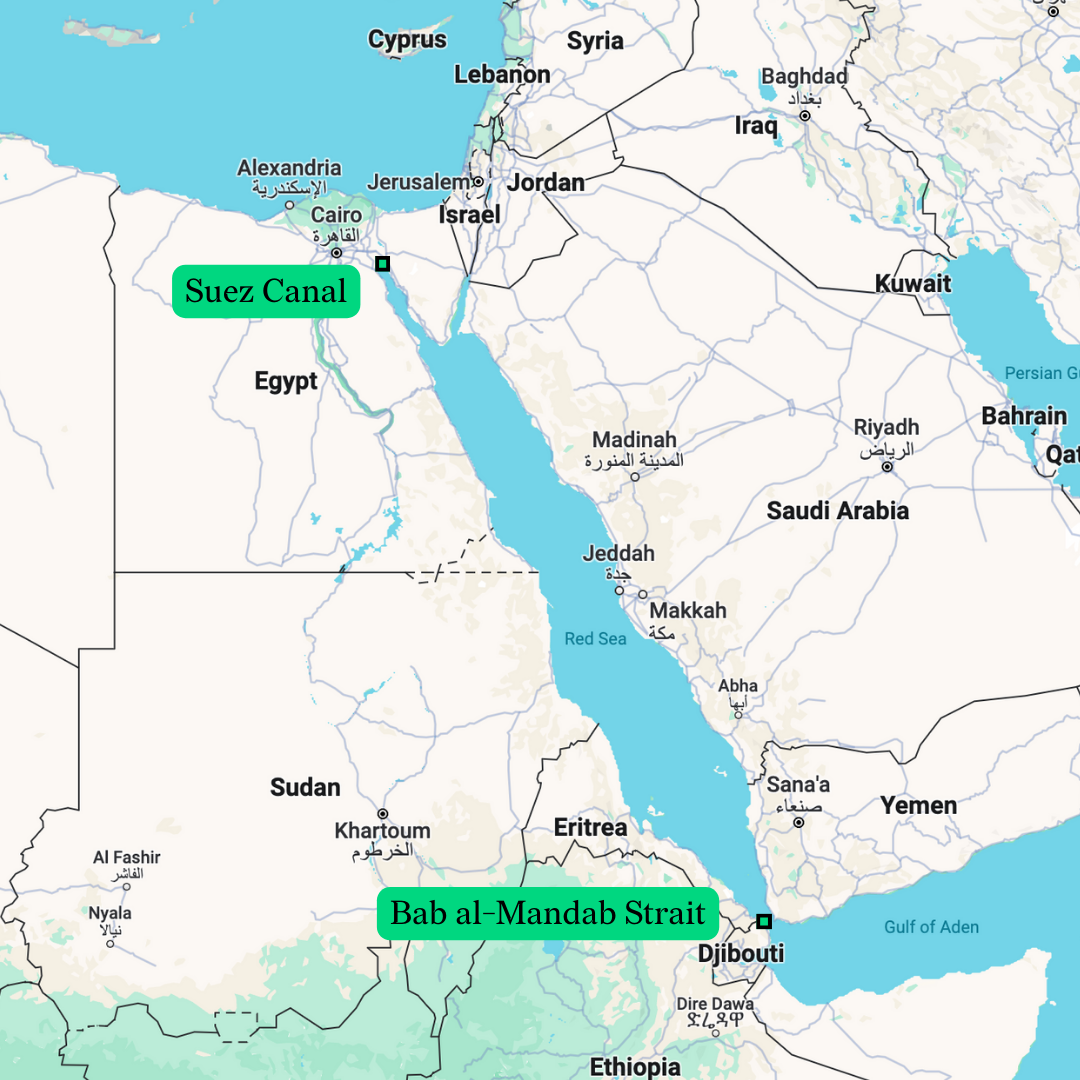
Society: Very Important Panda
It’s currently award season so naturally Singapore rolled out the red carpet for an exclusive celebrity—Le Le, the panda. Flanked by personal escorts, Le Le luxuriated in a first-class flight on a Singapore Airlines (SIA) freighter aircraft on Tuesday that put even Kim Air to shame. In a customised crate that took two weeks to build, Le Le enjoyed: a curated in-flight meal of his favourite food, including bamboo shoots, fruit, pellets and water; a pre-cooled aircraft chamber that maintained an ambient cabin temperature of 12 to 16 degrees celsius and low humidity throughout the four-and-a-half-hour flight; the company of four pilots, two keepers and a veterinarian onboard; and being welcomed by two SIA loadmasters at Chengdu airport. To ensure a smooth flight for the panda, the pilots even took a gentler angle when taking off and landing. Last December, Le Le made his final appearance at the Pavilion Capital Giant Panda Forest at River Wonders where he rolled around in front of an SIA boarding pass banner (our VIP was obviously allowed to check in early). Despite being born here via artificial insemination, Le Le was always bound to return to China. According to the China panda loan agreements, all cubs born abroad need to be returned by the time they turn two. Panda diplomacy (the act of gifting or leasing pandas as a tool to cultivate relationships with other countries) has roots in the Tang Dynasty but was revived in 1941 when Soong Mei-ling, wife of then president Chiang Kai-shek, gifted two pandas to the US as a thank you for sending aid to the Kuomintang while China was under siege by Japan. (They, and the Kuomintang more broadly, later fled to Taiwan.) Since then, pandas have evolved into an internationally recognised symbol of state relations with China—the power of pandas exemplified by Taiwan’s rejection of the cuddly creatures in 2006, citing worries that Beijing might “use the animals to win goodwill in its push for political unification.” Symbolism aside, it’s also expensive and difficult to host pandas. Foreign zoos must pay China a rental of up to US$1m (S$1.34m) per year per panda, who then typically require a multi-million dollar enclosure and consume more than US$100,00 (S$134,331) in fresh bamboo annually. Two pandas on loan in Thailand have died—Chuang Chuang, of a heart attack in 2019 and Lin Hui, of multiple organ failure in 2023—spurring outrage among panda lovers and animal rights activists who argued that plucking these animals out of their natural habitat and sending them overseas was harmful to their health, all the more worrying for a critically endangered species. It’s still panda-monium in Singapore though. Le Le’s parents, Jia Jia and Kai Kai, will be at River Wonders till at least 2027.
Society: EZ come, SimplyGo
It’s been quite the bumpy start to 2024 for the Land Transport Authority (LTA)—a “PR disaster” in the making, mused some experts. Many commuters have expressed their frustration and disappointment after LTA announced that EZ-Link and Nets FlashPay cards will no longer be accepted on Singapore’s public transport system come June 1st, because the system they’re running on is reaching the end of its operational lifespan. Instead, adults travelling on trains and buses will be forced to transition to the SimplyGo platform, introduced in 2019. This move won’t affect concessionary travellers, such as students, seniors, persons with disabilities and Workfare Transport Concession Scheme cardholders. The recurring complaint among Singaporeans is that fare deductions and card balances aren’t displayed at MRT gantries or bus card readers on the SimplyGo system. While it’s technically possible to provide this information, said LTA, it would slow down the entry and exit for commuters by a few seconds leading to longer queues, which wasn’t “desirable” (especially during peak hours). This might seem like a minor inconvenience, since commuters can check trip details and card balances at ticketing machines or on the SimplyGo app, but it’s “a reflection of how authorities pay so little attention to what commuters want or need when rolling out new tech,” noted an investor relations and communications specialist, on LinkedIn. It’s all been a bit of a high-tech fracas—many commuters have also faced problems when updating their cards at stations. Singaporeans have asked why a “future-ready” technological “upgrade” feels more like a downgrade, especially in user experience. Indeed, if countries like Hong Kong, Japan and Malaysia have rolled out contactless cards that can singularly cover public transport, retail and motoring, why does Smart Nation Singapore need a combination of more than one? Ho Ching, former boss of Temasek Holdings and wife of the prime minister, shared a post criticising SimplyGo. This has led some online commenters to wonder (half-jokingly?) if the “out-of-sync” decision might be reversed. LTA could even call it a go-stan.
History weekly by Faris Joraimi
Saya bukan keramat; saya manusia biasa saja. “I have no super powers, I’m just an ordinary human being,” said Malayan revolutionary and communist freedom-fighter Che’ Dat Bin Anjang Abdullah, also known as Abdullah CD. He died last Saturday, at 101. Born in Perak in 1923, Abdullah’s political awakening occurred in the context of mass Malay mobilisation against colonial rule in the years between the two world wars. He joined the leftist Young Malays Union in 1938, and was also a major organiser in the Malay labour movement. Abdullah was educated on Marxist theory and tactics by Indonesian exiles, who supplied him with political literature by prominent thinkers such as Tan Malaka. During the Japanese occupation, Abdullah joined the Malayan People’s Anti-Japanese Army and later the Malayan Communist Party (MCP) in 1945. Believing that the Malays should join the Chinese in overthrowing the British by force, Abdullah formed the only Malay unit in the MCP guerrilla army, the famous Tenth Regiment. He led several attacks against the British, sustaining injuries once from a hand bomb. In 1955, he married a Chinese comrade, Eng Ming Ching, who adopted a Malay name: Suriani Binti Abdullah. They had fought alongside each other for 10 years, and remained together until her death in 2013. Abdullah identified as a Muslim his whole life, believing Marxism to be a powerful weapon of liberation, and compatible with Islam (contrary to what colonial propaganda argued). A keen student of history, Abdullah drew inspiration from earlier Malay uprisings against the British, such as the assassination of James Birch, resident of Perak, by Dato Maharaja Lela in 1875. Oral tradition helped Abdullah see himself as part of a longer struggle: his father, a peasant, had also been involved in anti-British rebellions, and handed down those stories to him. He was appointed MCP chairman in 1985. At the 1989 Hat Yai Peace Agreement with the Malaysian and Thai governments, he was one of three MCP signatories together with Chin Peng and Rashid Maidin. In an interview that year with the magazine Suluh Rakyat (People’s Torch), Abdullah said that the importance of the MCP’s guerrilla war to independence should neither be overstated, nor downplayed, as both violent and non-violent Malayan movements pursuing merdeka complemented one another. (As Lee Kuan Yew himself acknowledged in his memoirs.) Asked about how stories of his exploits have made him the stuff of legend, Abdullah was modest. Yet his life was a sweeping saga. Bukan manusia biasa.
Arts: Tiny but fierce—the M1 Singapore Fringe Festival
The intimacies of Black masculinity, the fallout of elderly suicide, and the creeping tide of dementia: all difficult themes that promise to be delicately handled at the M1 Singapore Fringe Festival, which opened earlier this week. The annual festival that traditionally kicks off the Singapore performing arts calendar is organised by one of the country’s flagship theatre companies, The Necessary Stage. The mix of local and international productions are consistently small-scale, occupying the cosier studio venues at the Esplanade, Nanyang Academy of Fine Arts and The Theatre Practice this year. These portable shows are a signature of many fringe festivals. The uncurated Edinburgh Festival Fringe, arguably the world’s most famous fringe event, squeezed over 3,500 shows into three weeks last year (but has also been accused of appalling work practices and steep venue hire fees). The Singapore Fringe is a far more tightly curated event, and this year the presenters have selected productions that seek to “confront the senselessness of violence, and revive hope”, alluding to ongoing international conflicts such as the Israel-Hamas war. The festival began as a youth theatre platform in 1997 before moving to the fringe, as it were, in 2005. Until recently, it was programmed fairly strictly along thematic lines. Arts educator Sean Tobin was invited to helm three editions, where he chose to focus on Singaporean artists and their significant works—Amanda Heng’s “Let’s Walk” (2018), Suzann Victor’s “Still Waters” (2019), and Lee Tzu Pheng’s “My Country and My People” (2020)—getting Fringe applicants to respond to the issues explored in each of these pieces. The festival directorship has since returned to The Necessary Stage, who has discarded its usual “Art & _____” taglines for a looser thematic format, while remaining clear on its vision to encourage critical discourse through provocative sociopolitical work.
Arts: Central Public Library reopens
In the bowels of the gleaming National Library Building, beneath the Lee Kong Chian Reference Library’s seven floors and the Drama Centre’s five, is the Central Public Library. The public institution reopened this week after an 18-month makeover, part of a five-year plan called the “Libraries and Archives Blueprint 2025” (LAB25). Arts and culture policymaking in Singapore often adheres to these hyper-efficient, mid-term five-year cycles with their “strategic thrusts” and “key priorities of action”. These include the National Arts Council’s series of roadmaps, with the current “SG Arts Plan” running from 2023 to 2027. The basement library is taking its subterranean location seriously, with a renewed focus on marine biodiversity for kids featuring several underwater worlds, including an Intertidal Zone, an Open Ocean Zone and a Submarine Room. (All jointly created with the S.E.A. Aquarium at Resorts World Sentosa.) Readers will also be able to create their own worlds with the library’s new generative artificial intelligence (AI) storytelling wall powered by StoryGen, an application produced by the National Library Board and Amazon Web Services. Love it or hate it, generative AI and its ethical complications are here to stay; just last year, Chinese journalism professor Shen Yang copped a national science fiction award with his AI-generated novel (the extent to which the AI platform actually “wrote” the text remains up for debate, as always). This literary controversy prompted a local publishing house representative to critique the novel’s “weak” sense of language and decry the “irreversible damage” AI-generated writing might bring, though the current moral panic over new technologies also echoes historical suspicions over new creative technologies, including photography and film. Whether a weapon or a tool, a crutch or a prosthetic, it’s clear the National Library Board wants to find ways in which access to new reading and writing technologies can be offered to everyone in the digital world we inhabit.
Tech: The path to an IPO is riddled with government interference
Chinese fast-fashion label Shein might have shifted its holding entity to Singapore to centralise its global operations, but it remains closely watched by the motherland. The Cyberspace Administration of China’s (CAC) scrutiny of Shein’s data handling could have critical implications for the company, particularly as it filed for a US initial public offering (IPO) last November. The inquiry comes amidst heightened US political sensitivities that could potentially delay Shein’s listing. The CAC’s focus on the protection against overseas data leaks is likely due to increasing global data security and privacy concerns. Shein’s business model, known for rapid production cycles and affordability, has fueled its growth, with the company reporting a significant revenue increase from US$16bn in 2021 to US$23bn in 2022. However, Shein has drawn criticism for its seemingly unfair labour practices and supposed intellectual property infringements—Japanese retailer Uniqlo has sued its Chinese rival over allegedly copying its hugely popular shoulder bags. Other than Shein, other Chinese companies choosing Singapore to base their global headquarters include tech giants Ant Group and Tencent. Both have had issues with the CAC, which led to Ant’s delayed IPO and write-offs for Tencent’s education investments. Similarly, the investigation into Shein poses risks besides a delay of an IPO, such as supply chain disruptions, loss of customer trust, and increased compliance costs that could threaten its rapid global expansion plans.
Tech: Singapore attempts to govern generative AI
“It’s essentially hands-free crypto trading with a record of success,” Lee, the prime minister, said last December in an interview to promote an investment platform. Except that the remarkably similar voice in the video isn’t his, but a deepfake generated by AI tools. Given the perils of generative AI, the Singapore government has launched a draft governance framework for generative AI through the Infocomm Media Development Authority and AI Verify Foundation, signifying the country’s proactive approach to mitigating emerging risks from advanced AI technologies. Generative AI tools from major tech companies have grown increasingly sophisticated, hence the risks of misuse, manipulation and bias require clear oversight. The framework builds upon Singapore’s existing Model Governance Framework by providing practical guidance for developers and policymakers to ensure that AI decisions are “explainable, transparent and fair”. Its alignment with international standards also demonstrates Singapore’s aim to establish global norms for responsible AI development. Many governments are establishing policies for governing generative AI, similar to Singapore’s new framework, to ensure the safe and responsible development and application of these advanced systems, as they become more widely used. Countries establishing guidance include Australia, Canada, EU, France, Japan, the UK and the US. Tools like ChatGPT and Gemini have the potential for both benefit and harm, necessitating safeguards to ensure their outputs do not cause real world damage. Singapore’s new framework and evaluation sandbox aim to balance innovation with governance. The launch also reinforces Singapore’s leadership in the AI landscape through decisive actions like its revised national AI strategy and S$70m investment to develop AI for South-east Asian languages. The country’s vision to be a global AI hub with an emphasis on responsible, inclusive development is clear.
If you enjoy Jom’s work, do get a paid subscription today to support independent journalism in Singapore.

